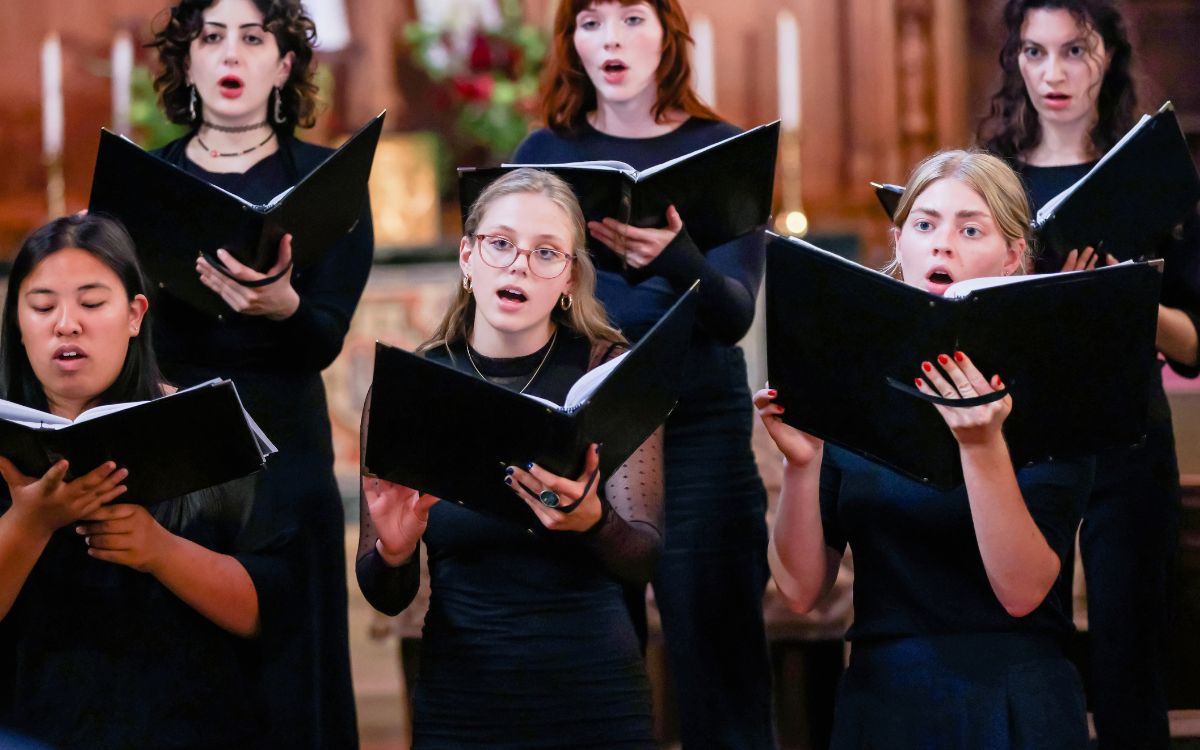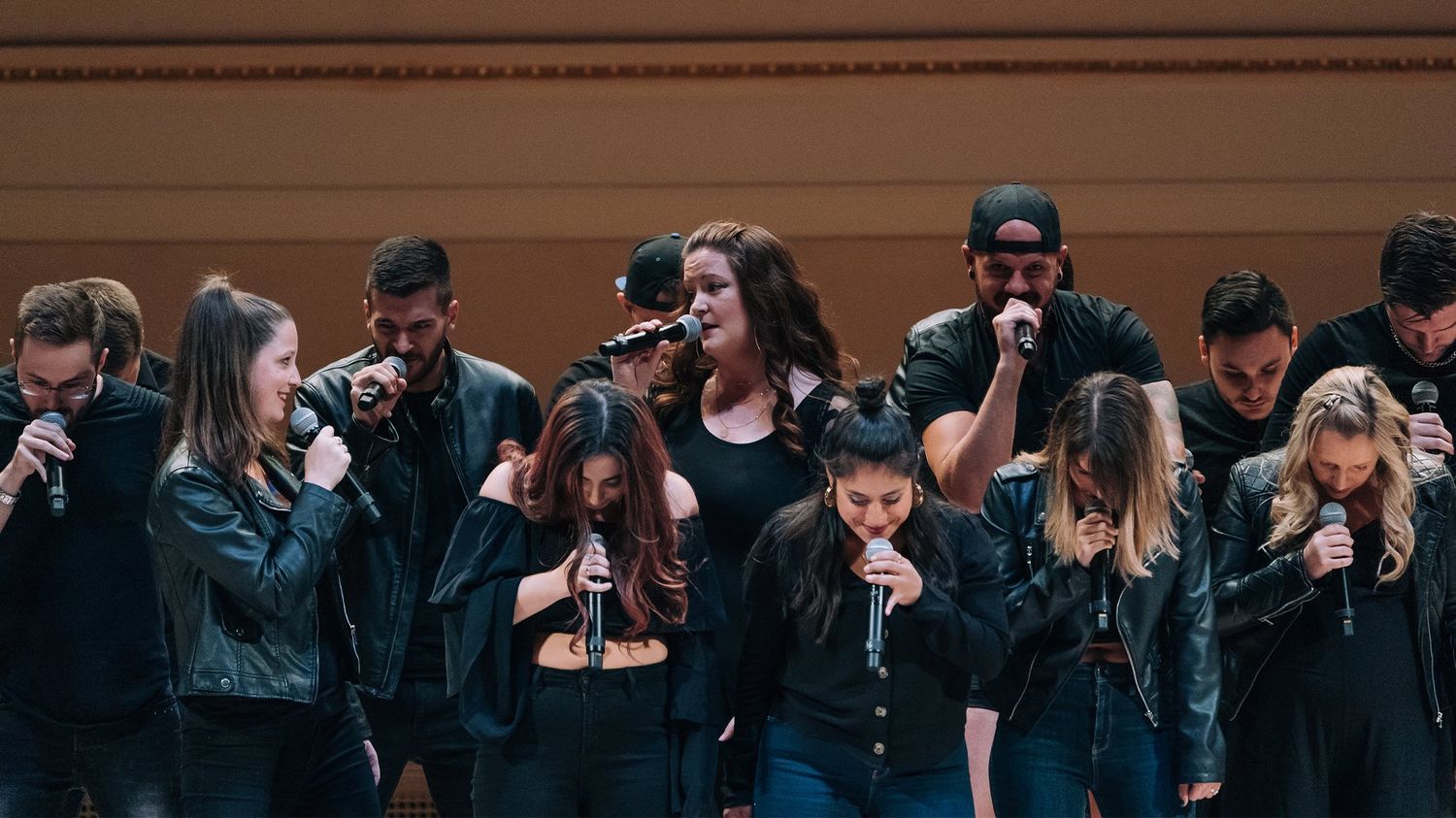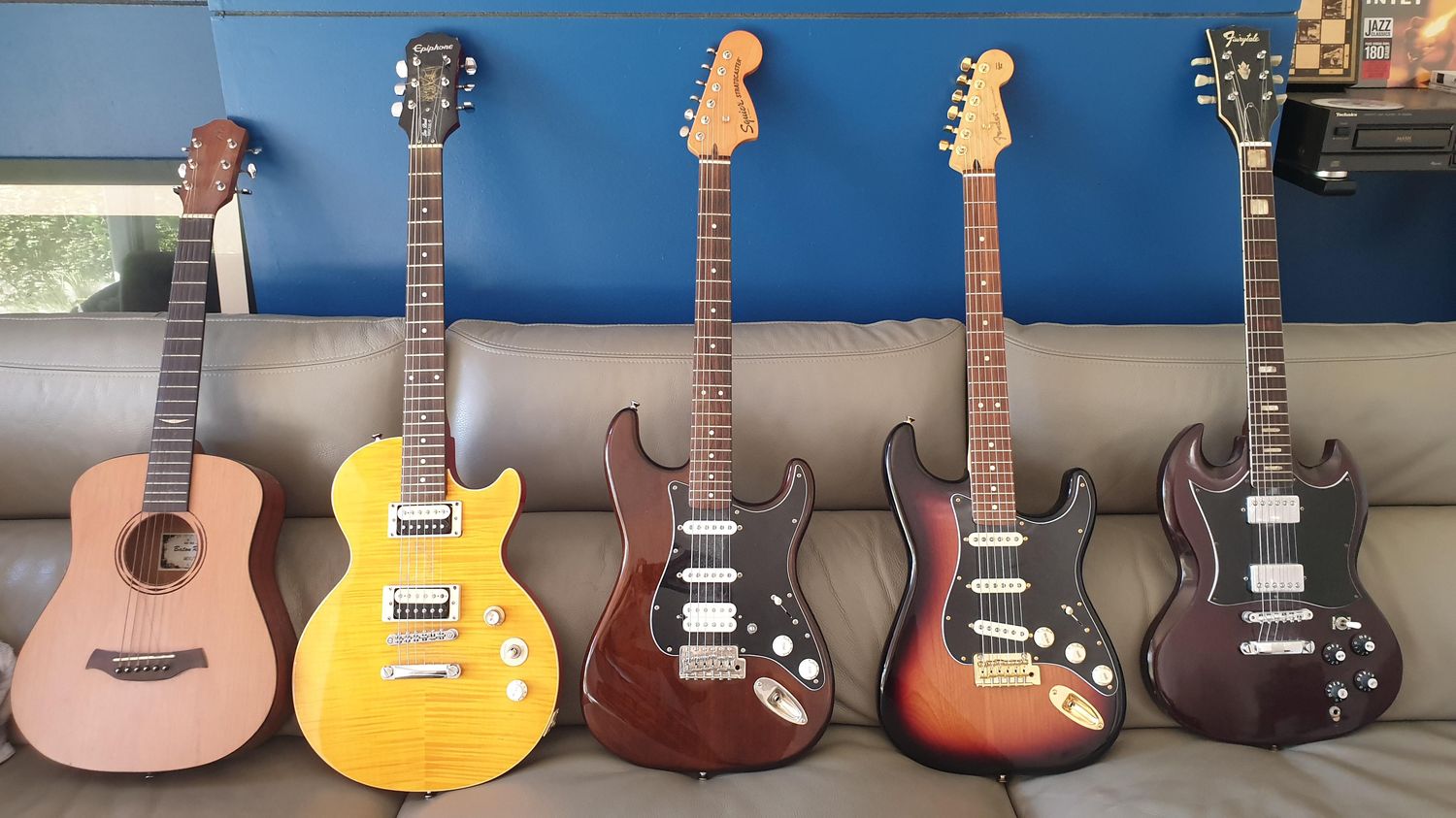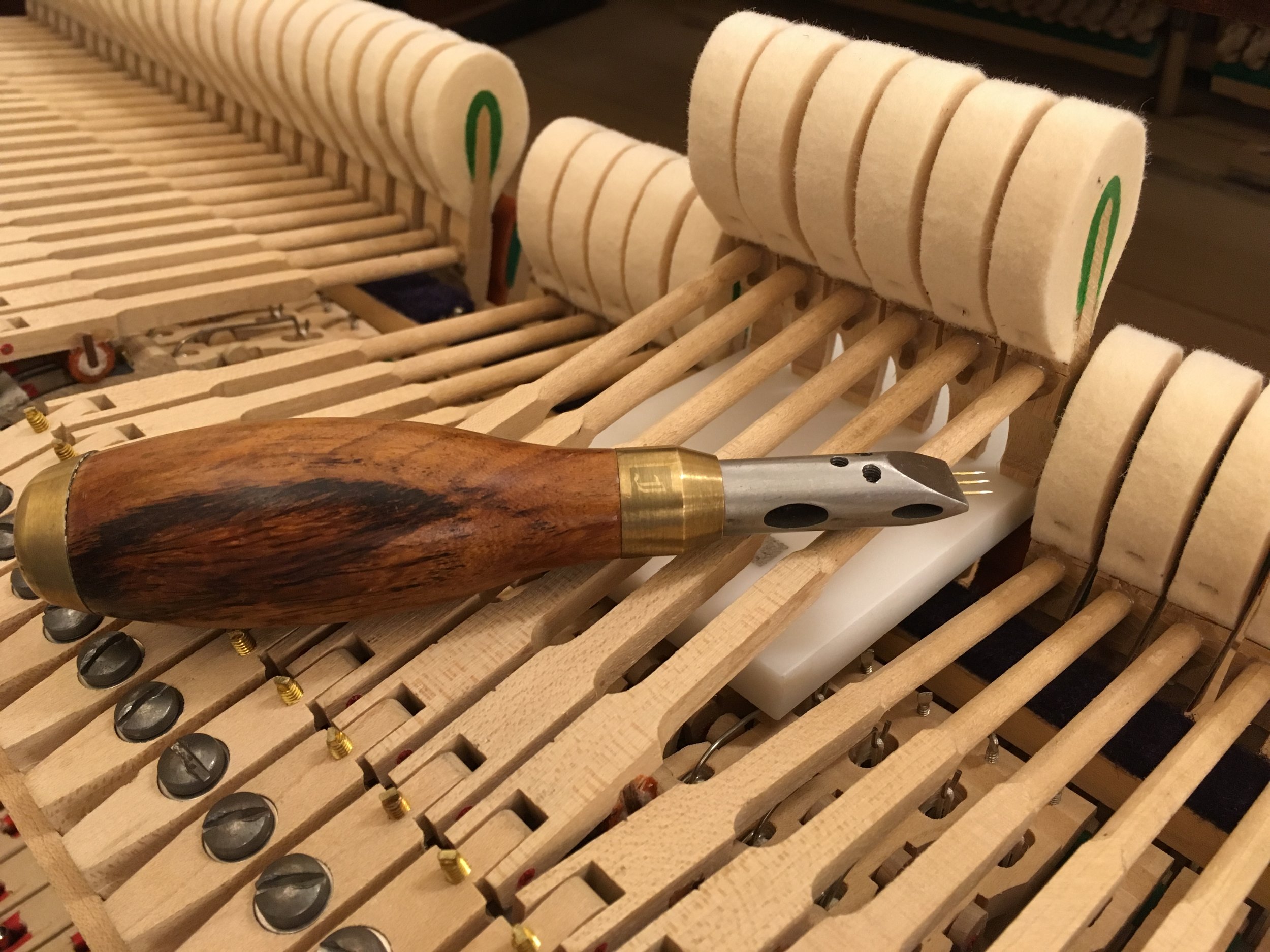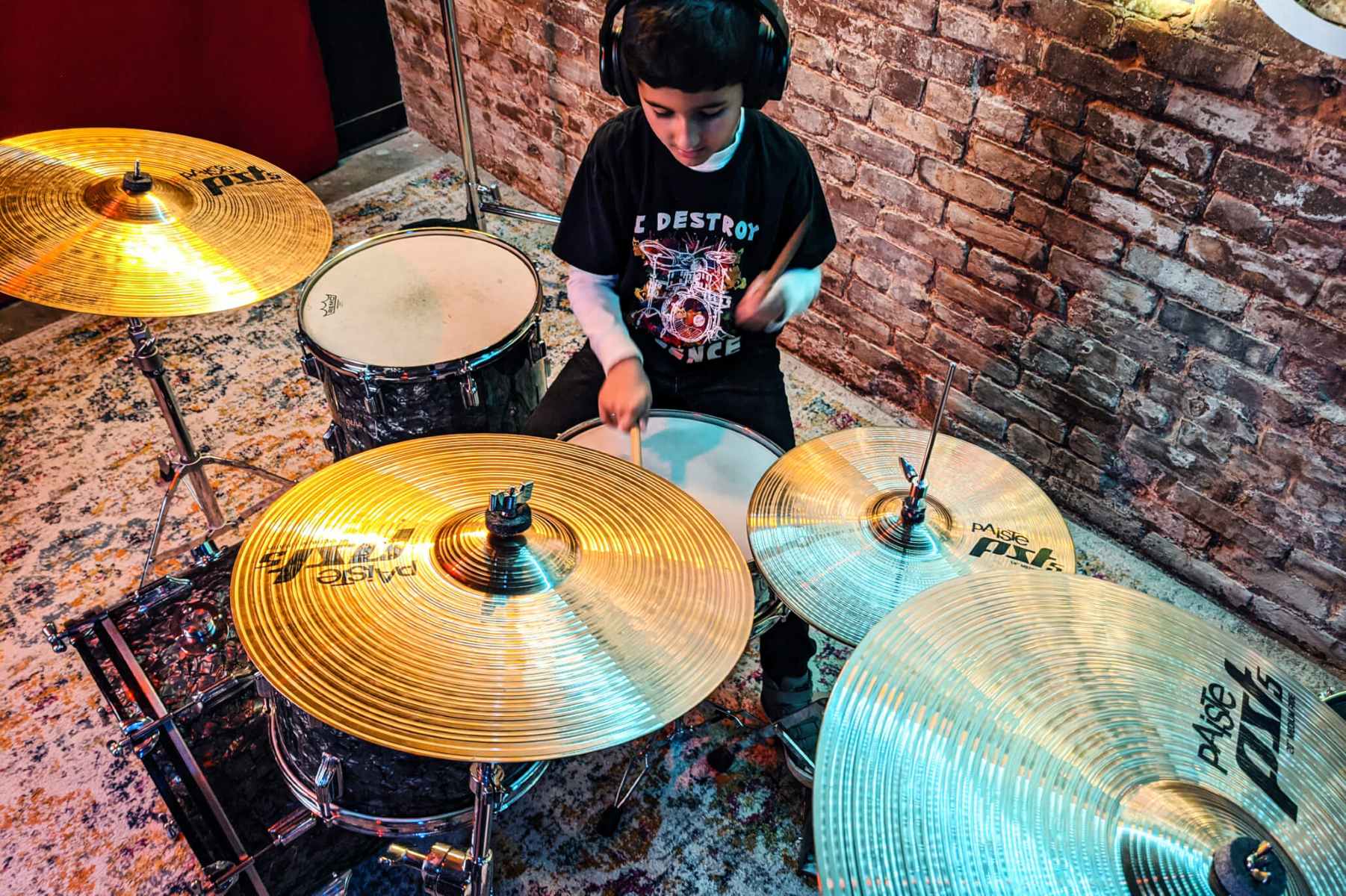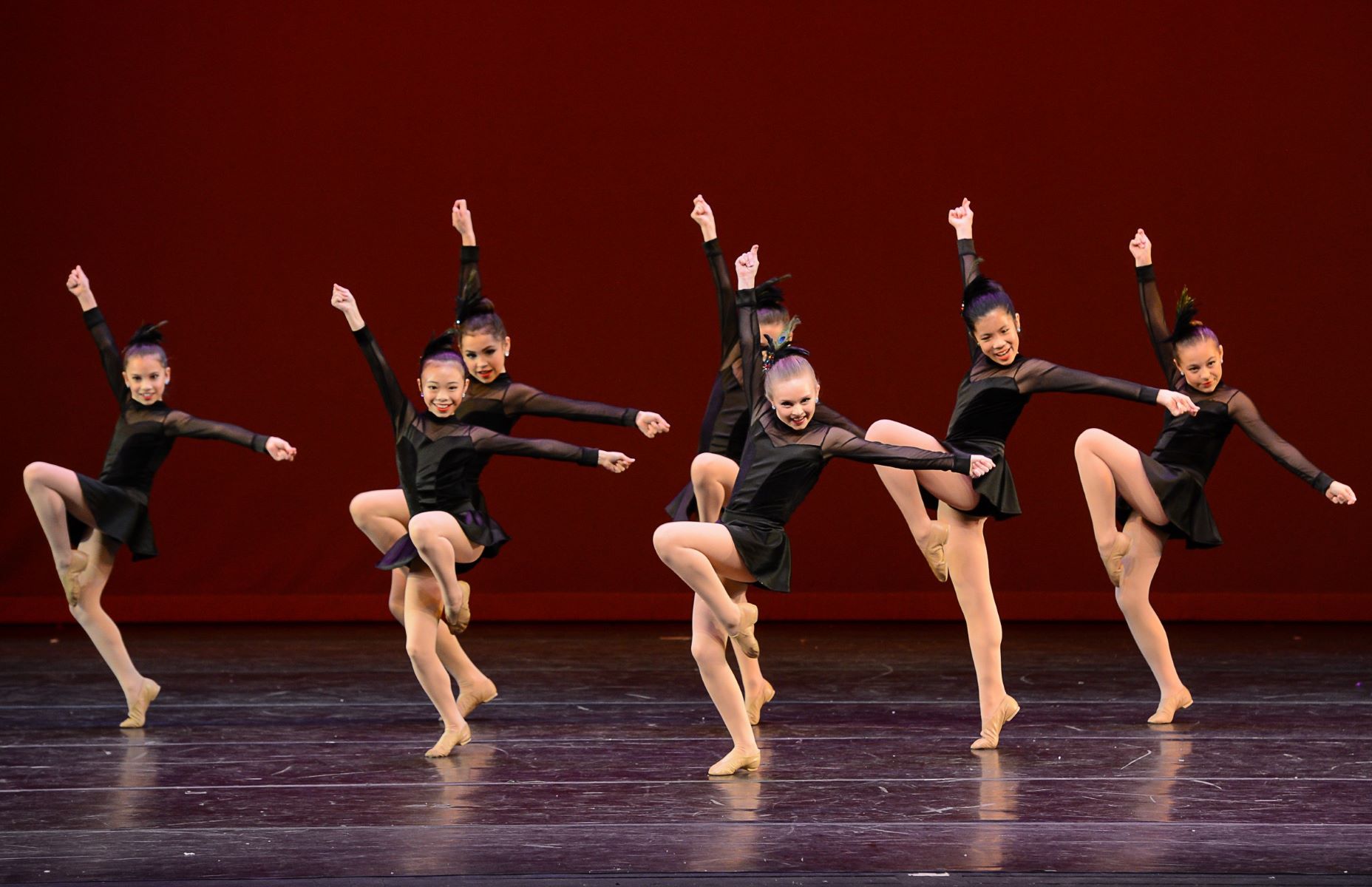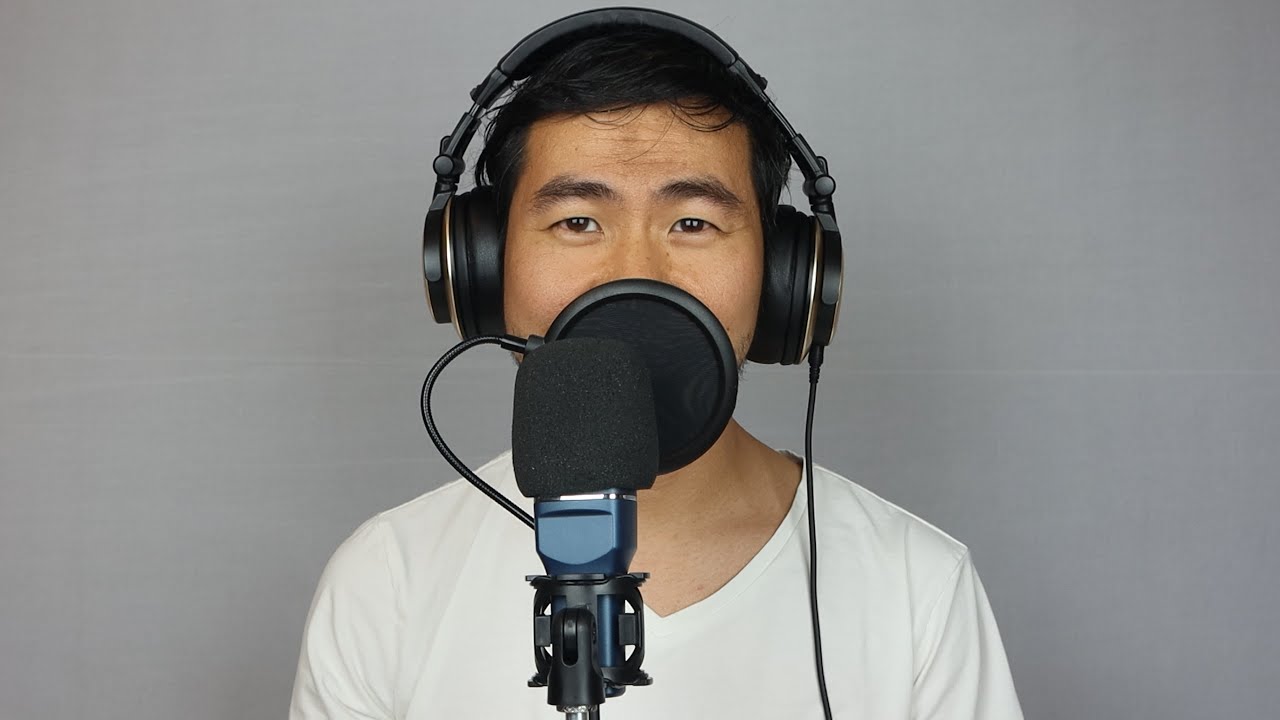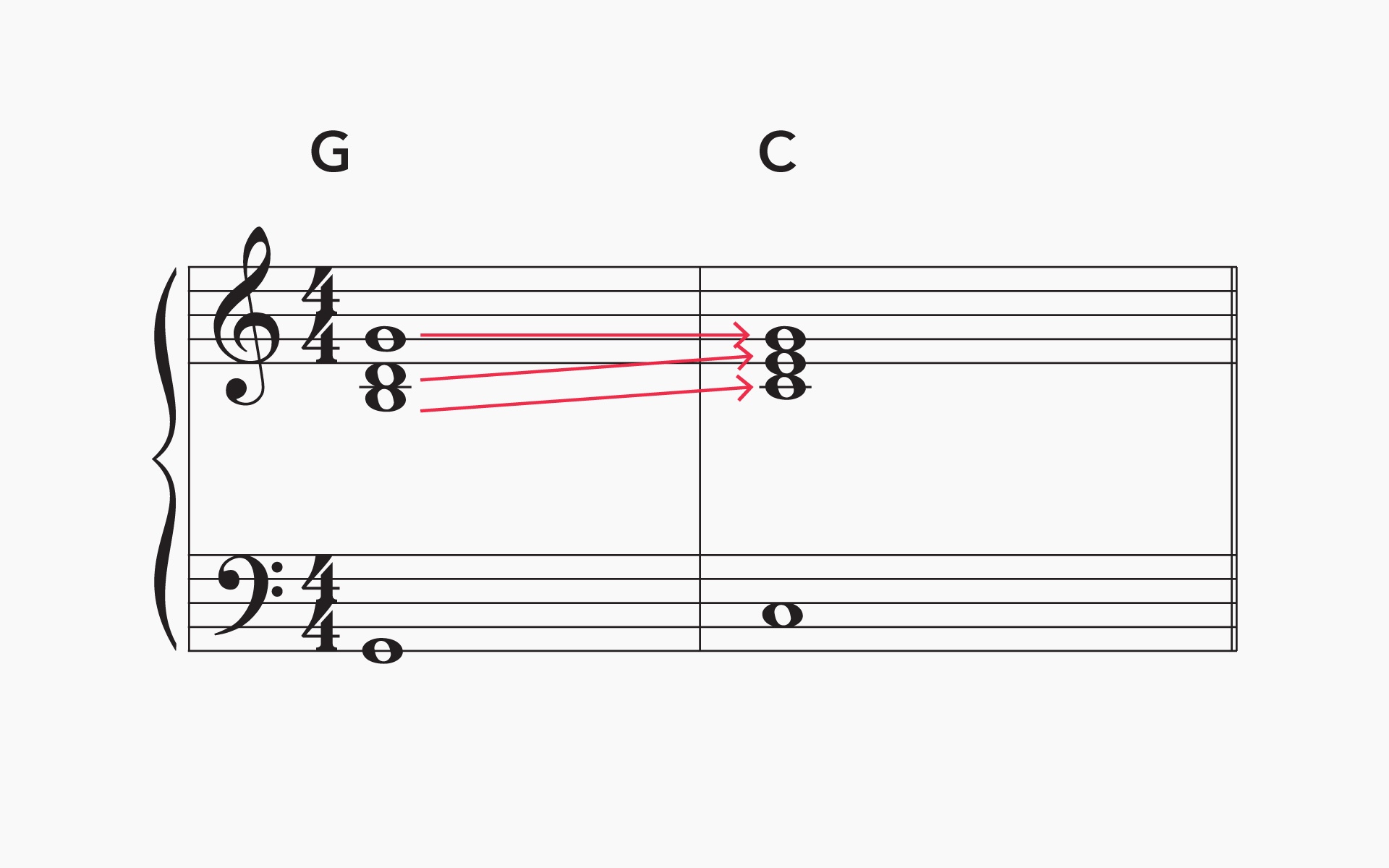Home>Events & Info>Acapella>What Voice Types In An Acapella Group


Acapella
What Voice Types In An Acapella Group
Modified: January 22, 2024
Learn about the different voice types in an Acapella group and discover how each vocal range contributes to creating harmonies and melodies. Explore the unique characteristics of Acapella singing.
(Many of the links in this article redirect to a specific reviewed product. Your purchase of these products through affiliate links helps to generate commission for AudioLover.com, at no extra cost. Learn more)
Table of Contents
Introduction
Acapella, derived from the Italian term meaning “in the manner of the chapel,” is a captivating form of vocal music performed without instrumental accompaniment. It emphasizes the use of the human voice as the sole instrument to create melodies, harmonies, and rhythmic patterns. Acapella groups consist of individuals with various voice types, each contributing their unique vocal range and timbre to produce a harmonious ensemble.
Understanding the different voice types within an acapella group is crucial for creating a balanced and rich sound. From soaring sopranos to the thunderous basses, each voice type adds a distinct flavor to the music. Through this article, we will explore the various voice types found in an acapella group and delve into the characteristics that make each one special.
Whether you’re a singer looking to join an acapella group or simply interested in vocal music, this article will provide you with valuable insights into the intricate world of acapella singing.
Soprano Voice
The soprano voice is the highest vocal range in the acapella group. It consists of singers with the ability to hit the highest notes with clarity and precision. Sopranos are often the focal point of the group, carrying the melody and adding a shimmering quality to the overall sound.
Sopranos have an impressive vocal range, typically spanning from C4 (middle C) to C6 or even higher. Their voices are characterized by a light and bright timbre, allowing them to effortlessly soar above the other voices in the group. Sopranos excel at singing melodies that require agility, control, and a pure tone.
Within the soprano voice category, there are often subcategories based on vocal range and timbre. These include lyric sopranos, coloratura sopranos, and dramatic sopranos. Lyric sopranos have a smooth and lyrical quality to their voice, while coloratura sopranos have exceptional agility and can perform elaborate vocal runs and trills. Dramatic sopranos, on the other hand, have a powerful and commanding presence, often suited for more intense and dramatic musical passages.
In an acapella group, sopranos serve as the melody carriers, harmonizing with the alto voice and occasionally interweaving with the other voices for added complexity. They are responsible for hitting the high notes, adding sparkle and brilliance to the music.
Some well-known examples of sopranos in the acapella world include vocalists like Pentatonix’s Kirstin Maldonado and Straight No Chaser’s Randi Lupo. Their impressive vocal range and control have captivated audiences around the world.
Overall, the soprano voice is crucial in an acapella group, bringing a vibrant and melodic element to the music. Their ability to hit high notes with precision and clarity adds an ethereal quality that elevates the entire ensemble.
Alto Voice
The alto voice is an essential component of an acapella group, providing a rich and warm middle range to complement the soprano voice. Altos are known for their versatility and ability to harmonize with other voices, adding depth and complexity to the overall sound.
Altos have a vocal range that typically spans from F3 to E5, although individual ranges can vary. Their voices have a fuller and darker timbre compared to sopranos, creating a beautiful contrast in the harmonies. Altos often provide the harmonizing parts that add texture and support to the melody.
The alto voice can be further categorized into mezzo-sopranos and contraltos. Mezzo-sopranos have a balanced voice that falls between the soprano and alto ranges, while contraltos have a lower range and a richer, more resonant sound.
In an acapella group, altos play a crucial role in creating harmonies and adding depth to the overall musical arrangement. They often sing in parallel or contrasting lines to the sopranos, creating pleasing chord progressions and enhancing the harmonic structure.
Notable alto voices in the acapella world include Avi Kaplan of Pentatonix and Tim Foust of Home Free. Their deep, resonant tones provide a strong foundation for the group’s sound.
Altos are also responsible for filling in the gaps between the higher and lower voice parts, ensuring a well-rounded and balanced sound. Their ability to blend with other voices, while maintaining their own distinctive timbre, is a testament to their versatility.
In summary, the alto voice brings depth, warmth, and harmonies to an acapella group. With their rich timbre and ability to blend seamlessly with other voices, altos play a vital role in creating a balanced and captivating musical experience.
Tenor Voice
The tenor voice holds a significant role in an acapella group, providing a vibrant and powerful sound in the middle to high range. Tenors are known for their ability to hit high notes with clarity and maintain a clear and resonant tone throughout their vocal range.
Tenors typically have a vocal range that spans from C3 to C5 or higher, and their voices have a bright and piercing quality. They bring energy and intensity to the music, often taking on melodic lines and adding a touch of excitement to the overall sound.
Within the tenor voice category, there can be different subcategories based on vocal range and timbre. These include lyric tenors, spinto tenors, and dramatic tenors. Lyric tenors have a smooth and agile voice suited for more lyrical and melodic passages. Spinto tenors have a slightly heavier and more powerful sound, ideal for roles that require both lyricism and dramatic impact. Dramatic tenors possess a robust and commanding voice, capable of delivering powerful and intense performances.
In an acapella group, tenors are responsible for adding harmonies above the melody, adding depth and complexity to the overall sound. They often sing in unison or in parallel with the sopranos, creating striking vocal combinations and dynamic arrangements.
Some well-known tenors in the acapella world include Scott Hoying of Pentatonix and Chris Rupp of Home Free. Their strong and versatile voices have left audiences in awe with their exceptional range and control.
Tenors are essential for creating a full-bodied and vibrant acapella sound. With their ability to hit high notes, add harmonies, and bring a sense of excitement to the music, tenors contribute to the overall dynamics and energy of the group.
In summary, the tenor voice in an acapella group brings energy, power, and versatility. With their bright and resonant tones, tenors have the ability to captivate listeners and add a thrilling dimension to the ensemble’s performance.
Bass Voice
The bass voice in an acapella group provides the foundation and depth, adding a rich and resonant quality to the music. Bass singers are known for their ability to hit the lowest notes with strength and clarity, creating a powerful and grounding presence within the ensemble.
Bass singers typically have a vocal range that spans from E2 to E4 or lower. Their voices have a deep and full-bodied timbre, often characterized by a rumbling resonance. Bass singers have the ability to create a strong and stable harmonic foundation, anchoring the group’s sound.
Within the bass voice category, there can be different subcategories depending on vocal range and timbre. These include bass-baritones and true basses. Bass-baritones have a range that extends into the baritone range as well, while true basses have an even lower vocal range that emphasizes the lowest notes.
In an acapella group, bass singers provide the low harmonies and support the overall harmonic structure. They often sing in parallel or contrasting lines with the higher voices, creating rich and complex chord progressions. Bass singers also add a sense of rhythm and groove, laying the foundation for the musical arrangement.
Some well-known bass singers in the acapella world include Tim Storms of Vocal Spectrum and Avi Kaplan of Pentatonix. Their deep, resonant voices have captivated audiences with their incredible range and ability to hold solid, foundational notes.
The bass voice is integral to creating a balanced and robust acapella sound. With their ability to hit low notes with clarity and power, bass singers bring depth and richness to the music, creating a strong and grounded presence within the group.
In summary, the bass voice in an acapella group adds depth, resonance, and stability. With their powerful and low tones, bass singers create a solid foundation, ensuring a harmonically rich and captivating musical experience.
Baritone Voice
The baritone voice is a versatile and crucial voice type in an acapella group, providing a bridge between the higher and lower voices. Baritones possess a balanced vocal range, making them capable of singing both low and high notes with ease.
Baritones typically have a vocal range that spans from A2 to A4. Their voices have a warm and smooth timbre, sitting between the higher tenor and lower bass voices. Baritones add depth and richness to the harmonies, creating a harmonious blend between the different vocal ranges.
In an acapella group, baritones play a vital role in harmonizing with the higher voices while providing support to the lower voices. They often fill the “in-between” harmonies, creating a sense of continuity and blending the higher and lower voice parts seamlessly.
Baritones bring a unique tonal quality to the music, providing a touch of mellowness and richness to the overall sound. Their ability to shift between higher and lower registers adds variety and complexity to the vocal arrangements.
Notable baritone voices in the acapella world include Scott Leonard of Rockapella and Rob Lundquist of Home Free. Their smooth and versatile voices have contributed to the success and unique sound of their respective groups.
Baritones also play a crucial role in shaping the dynamics and expressiveness of the music. They can add depth and emotion to the melodic lines, creating a sense of nuance and subtlety.
In summary, the baritone voice in an acapella group serves as a bridge between the higher and lower voices, adding depth, warmth, and versatility to the ensemble’s sound. With their ability to harmonize and provide a smooth and balanced timbre, baritones contribute to the overall harmony and cohesion of the group.
Vocal Percussion
Vocal percussion, also known as beatboxing, is a unique and exciting element of acapella music. It involves creating rhythmic sounds, beats, and percussive effects using only the human voice. Vocal percussionists, often called beatboxers, use their mouths, lips, tongue, and vocal cords to mimic the sounds of various drum and percussion instruments.
Vocal percussion adds a dynamic and rhythmic layer to the acapella performance, providing the groove and rhythm that drive the music forward. Beatboxers can create a wide array of sounds, including drum beats, hi-hat sounds, snare drum sounds, bass drum sounds, and even vocal scratches and sound effects.
Beatboxing requires a combination of rhythmic accuracy, creativity, and technical skill. Vocal percussionists must have a good sense of timing, as they need to synchronize their beats with the other singers in the group. They also need to have a clear understanding of different musical styles and rhythms to create diverse and engaging percussive patterns.
In an acapella group, the vocal percussionist often takes on the role of providing the rhythmic foundation, allowing the other voices to harmonize and showcase their melodic abilities. They can create complex and intricate percussion patterns, enhancing the overall musical arrangement.
Notable beatboxers in the acapella world include Kevin “K.O.” Olusola of Pentatonix and Jeff Thacher of Rockapella. Their exceptional beatboxing skills have amazed audiences and have been instrumental in shaping the unique sound of their respective groups.
Vocal percussion is not just limited to imitating drum sounds. Beatboxers can also create melodic elements, adding musicality to their performances. They can imitate instruments like guitars, trumpets, and even electronic synthesizers, further expanding the sonic possibilities of acapella music.
In summary, vocal percussion is an exciting and essential component of acapella music. Through beatboxing, vocal percussionists add rhythmic complexity, groove, and even melodic elements to the performance, complementing the other vocal voices and creating a dynamic and engaging musical experience.
Conclusion
The world of acapella music is a captivating and diverse realm, with each voice type adding its unique flavor to the ensemble. From the soaring sopranos to the resonant basses, and the harmonizing altos to the versatile baritones, each voice type plays a crucial role in creating the harmonies, melodies, and rhythms that define acapella music.
The soprano voice offers brilliance and clarity, hitting the high notes and carrying the melody. The alto voice adds depth and richness, harmonizing with the sopranos and creating a layered sound. The tenor voice brings energy and power, hitting the high notes with precision and adding excitement. The bass voice provides a strong foundation, creating a resonant and grounding presence. The baritone voice acts as a bridge, blending and harmonizing between the higher and lower voices. And the vocal percussionist creates rhythmic beats and percussive effects, adding groove and creativity.
Together, these voice types create a tapestry of harmonies and melodies, conveying a range of emotions and delivering a captivating musical experience. Acapella music allows the human voice to take center stage, showcasing the incredible capabilities and versatility of vocal talent.
Whether you are a singer looking to join an acapella group or a music enthusiast appreciating the beauty of vocal music, understanding the different voice types within an acapella ensemble is crucial. It allows for a deeper appreciation of the role that each voice plays in creating a harmonious and balanced sound.
So next time you listen to an acapella performance, pay attention to the soaring sopranos, the resonant basses, and everything in between. Take a moment to appreciate the intricate vocal harmonies, the power of the percussion, and the seamless blending of voices that make acapella music a truly unique and captivating art form.
In the world of acapella, each voice type is indispensable, coming together to create a harmonious whole that showcases the incredible capabilities of the human voice.

